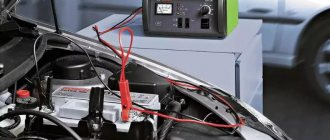How the tool works
Literally, the word perforator means “drill hammer.” To increase productivity in mining operations, the jackhammer was developed in the early 19th century. The principle of operation of the device was to use a flywheel. He set in motion a bar with special tucks attached to it. The rod, under the influence of a spring, struck and returned back with a piston.
The device was constantly improved. In 1932, in Germany, the Bosch Corporation released the first rotary hammer powered by electricity. This device combined impact and torque. The operating principle developed by the company is still used in modern models of electric hammer drills.
A rock drill is a device designed to drill holes and destroy hard rock. Drills of different diameters and chisels are used as consumables. The tool is divided by application class:
- domestic;
- semi-professional;
- professional.
In addition, it is distinguished by its operating mechanism, which can be electromagnetic or pneumatic. The last type of mechanism is available in one-, two-, and three-mode. That is, you can perform drilling, striking, or both operations simultaneously.
The tool resembles a pistol in appearance and can be operated with an electric, fuel or pneumatic drive. The latter are in demand under hazardous working conditions, during which there is a possibility of explosion.
The operating principle of a hammer drill, which distinguishes it from other similar tools, is based on the impact mechanism. The electromagnetic type uses two electromagnetic coils to provide reciprocating motion of the core. It transfers inertia to the drill shank. The pneumatic type is based on the movement of a piston in a cylinder, which also performs reciprocating movements.
The operation of an electric hammer drill uses the conversion of engine rotation into the shock-rotational movement of the drill. The coupling used in the design provides protection under increased loads. The drill bearing and piston create the impact force, and the drill clamp provides the chuck.
Each manufacturer strives to improve the design through the use of design features. These are mainly minor modifications related to the use of various materials and their location. In general, the main elements remain unchanged. Such details include:
- power button;
- engine;
- impact mechanism;
- safety clutch;
- drill clamp.
Additional design features include a dust removal system and a vibration suppression unit. For a multi-mode type of tool, a work switching button is installed.
Device motor
The engine, being the main element of the device, drives all other parts of the mechanism.
It consists of a stator and a rotor, with the rotor being a moving part and the stator not. The rotor includes an armature and a commutator. An anchor is a block containing steel plates. Windings of copper wire are wound on them. The collector, in turn, looks like a cylinder. Its design has the form of a dielectric with installed conductive plates; the armature windings are connected to these plates. Rotation of the rotor occurs due to the magnetic flux created around it by the stator windings and leading to the occurrence of a torsional moment. In this case, the rotor uses only a constant current value, and the magnetic flux is always directed only in one direction. Power is supplied through brushes made of graphite. The brushes are arranged in such a way as to ensure electrical contact with the armature.
The wear of the brushes should not exceed 70 percent; if it exceeds, they need to be replaced. Before replacing, pay attention to the brush holder and clean it if necessary.
You can use a multimeter to check the windings. To do this, one probe of the measuring device is installed on the brush holder, and the second on the input for connecting to the 220 volt network. To accurately determine the connection locations, it is easier to use an electrical diagram. If the resistance is infinite, it is concluded that the winding has burned out.
How to repair a Makita rotary hammer?
To determine the cause of the failure, you need to disassemble the cartridge. You need to disassemble it as follows:
- First of all, the lever is dismantled.
- Next, the cartridge is disassembled. To do this, take a screwdriver and remove the gasket from the rubber. Then the retaining ring is removed.
- After this, all other elements are removed.
Problems with the cartridge may be the following:
- The gasket is worn out. If this happens, you need to clean the tool from dust and replace the boot.
- Cover deformation. In this case, the element is replaced.
- The retaining ring has become loose. The element should be slightly tightened if possible. If not, then the part must be replaced.
- If the ball is worn out, you need to install a new part, lubricate it and secure it in the hole of the guide washer.
- If the ball guide is worn, the level of wear should be determined. If it is small, then it is enough to lubricate the part. If there is significant wear, the element must be replaced.
- The conical spring is the most durable element, but it can also wear out from time to time. The part must be positioned with the smaller tip facing the gearbox.
The cartridge is assembled in the reverse order. Finally, you need to lubricate the end of the drill.
Safety clutch
When the load on the tool increases, exceeding its characteristics according to the operating instructions, in order to prevent damage to the elements, a safety clutch is installed. Its main task is to stop the mechanism from trying to rotate the cartridge when the drill jams. If such a coupling had not been in place, then when jammed, the hammer drill would have been twisted out of the hands.
According to the type of use, clutches can be claw and friction. The first type consists of two parts with beveled edges and connected to each other through a spring. As the pressure increases, the spring straightens and the parts come out of the clutch. The clutch disengages. This condition is characterized by the appearance of a crackling sound. In a friction clutch, the torque is transmitted to the connected mechanism due to the tight compression of the discs. When overloaded, the compression force disappears and rotation is not transmitted.
What is a straight hammer drill and what does it consist of?
Structurally, the instrument under consideration is of two types - pistol or straight and barrel. They differ not only externally, but also structurally. Let's look in detail at what a pistol and barrel perforator is, how they work, as well as the features of their correct use.
This is interesting!
Pistol and straight hammer drills have the same design, and they differ only in the location of the handle.
Externally, the instrument has a plastic body on which the controls are located. These organs include (for direct and pistol type hammer drills):
- Trigger for turning on the tool and regulating the speed of rotation of the executive body - the chuck
- Switch lock - allows you to prevent the tool from turning on independently, and also eliminates the need to hold the trigger, which is convenient when performing long-term work
- Reverse switch - allows you to switch the direction of rotation of the cartridge in two directions
- Regulator for switching tool operating modes
- Chuck rotation speed regulator - not available on all rotary hammer models
- Additional handle for ease of work
- The executive body is a cartridge, inside of which nozzles are fixed depending on the assigned tasks
Inside, the power tool consists of the following elements:
- The electric motor is the “heart” of the tool, which powers the chuck.
- Gear unit - rotational energy is transmitted to the gearbox, which allows you to regulate the speed and also creates an impact action. The gearbox consists of gears, as well as a special mechanism that creates impact actions
- A safety clutch is an auxiliary part that prevents tool failure when the nozzle jams in the surface being processed. If the drill jams, the electric motor may burn out.
- An anti-vibration system is a device that reduces vibrations. Such a system is relevant, since during prolonged work with a hammer drill, not only fatigue occurs, but also hand tremors. In barrel perforators this system is also more advanced compared to pistol types
These are the main internal mechanisms of a power tool, which you need to familiarize yourself with in more detail in order to understand the principle of operation of a rotary hammer. So, to find out how a hammer drill works, you need to understand the internal mechanisms.
This is interesting!
Do you know why powerful rotary hammers have a vertical engine? The reason for this is the following - the barrel hammer has an improved cooling system, as well as a reliable torque transmission mechanism.
Impact mechanism
This part of the tool provides the main task of the hammer drill - to chisel. The type of operation can be mechanical or pneumatic.
There are two design options for a pneumatic mechanism : using a rolling bearing or a crank type. The first option is used for a household type of tool, and the second - for a professional one.
A device using a rolling bearing, or otherwise a “drunk bearing,” consists of a group of elements: a piston, a firing pin, a ram and the bearing itself.
The rotation of the engine during operation is associated with the inner sleeve of the “drunk bearing”. The outer sleeve is connected to the piston and performs a rolling motion. The distance between the piston and the ram is filled with air. It, subject to changes in pressure, acts on the ram, which repeats the movements behind the piston. As a result, a blow is struck to the striker, which, in turn, transfers the force of the blow directly to the drill. This action actually means the conversion of electrical energy into mechanical energy.
Basic rules of operation and care
Proper care of the device ensures a long period of its operation. In this case, it is imperative to pay attention to the lubrication of the gearbox. This is especially true when working with concrete, since it is accompanied by the appearance of a large amount of dust.
After finishing work, you need to wipe the tool with a soft cloth. If necessary, it is permissible to use a soap solution. The cleanliness of the ventilation openings is of no small importance.











